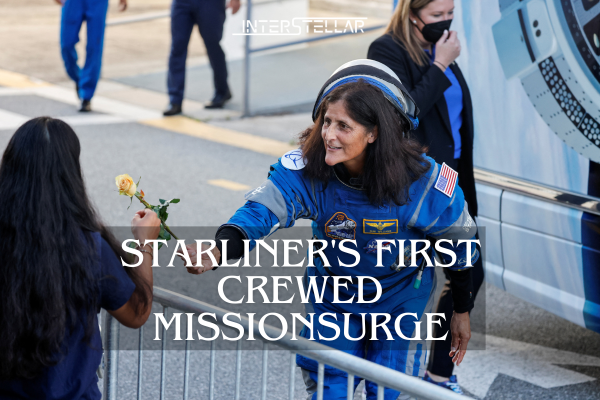Sunita ‘Suni’ Williams and Barry ‘Butch’ Wilmore walked out to loud cheers before boarding Boeing’s Starliner. They are part of the first crewed mission that was launched successfully from Florida to the International Space Station and is expected to dock at ISS on June 6. Sunita Williams, the Indian-origin astronaut on this mission, is on her third space flight. She had earlier spent 322 days in space and is making history as the first woman to fly on a maiden crewed mission of a new space shuttle.
NASA Administrator Bill Nelson explained the mission. “They’re test pilots. And they’re going to test this thing from ‘izzard to gizzard’ and they’re going to certify it for a rotational basis to send a crew to the International Space Station.”
The mission is to check if the Starliner can be certified for routine astronaut missions.
The entire process will involve the astronauts executing precise maneuvers to dock with the ISS, demonstrating it can stay docked for about eight days. After that, the capsule will have to safely return the two astronauts to Earth, among other flight objectives.
STARLINER LIFTOFF AFTER DELAYS AND GLITCHES
The liftoff comes after years of technical problems, delays and a successful test mission that was carried out in 2022 without astronauts on board.
The Chief of Boeing’s Starliner program called it a perfect countdown and launch but this mission wasn’t without its problems.
Last-minute issues had nixed the Starliner’s first two crewed launch attempts. On May 6, the countdown was halted two hours before liftoff over three issues that required weeks of extra scrutiny. Again, on June 1, another attempt was called off less than 4 minutes before liftoff because of a launchpad computer glitch, drawing attention to just how all things needed to fall in place for the mission to work.
SpaceX’s Crew Dragon and Starliner are among the first in a new generation of privately built spacecraft designed to fly astronauts to low-Earth orbit, and later to the moon under NASA’s Artemis program. Both are designed to be reusable. “…with Dragon and Starliner, the US is going to have two unique human space transportation systems, and of course, we always like to have a backup that makes it safer for our astronauts,” said Bill Nelson.
WHY THIS MISSION IS IMPORTANT FOR NASA
Curator of Contemporary spaceflight at the National Air & Space Museum Emily Margolis explains: When the final space shuttle landed in 2011, that marked the end of American capabilities to send astronauts into space from US soil and so as part of the retirement of the Space shuttle program, NASA arranged with the Russian space program to allow American astronauts to fly on Soyuz vehicles to the International Space Station. And so that was how American astronauts got to space all the way up until 2020. When SpaceX demonstrated its first crude flight of the Crew Dragon spacecraft. And so it is a very exciting time for NASA to have two different opportunities to send astronauts into space, two different vehicles in their fleet available to them.
The two astronauts are to ride Starliner back to Earth for a parachute and airbag-assisted landing, something that is being done for the first time for a crewed NASA mission.





